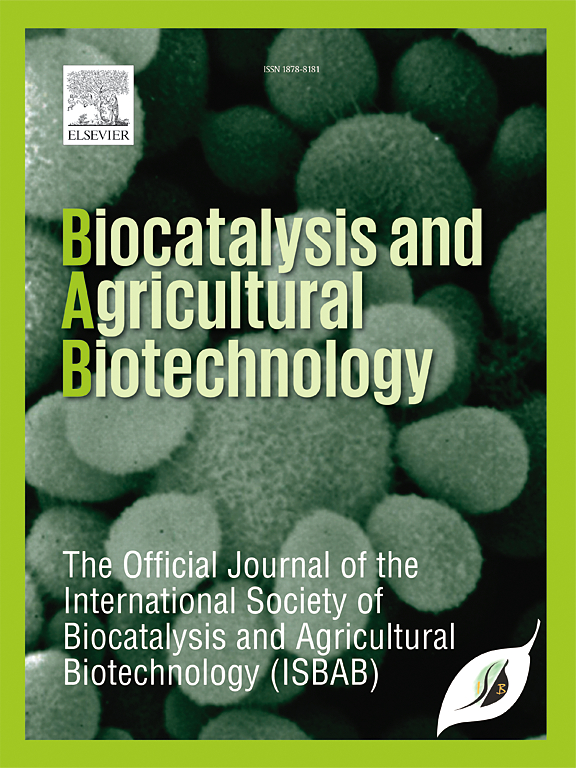Production and fractionation of protein hydrolysate produced from fish sausage (Keropok Lekor) by-products by Lactobacillus casei fermentation: Optimisation and impact of peptide molecular weight on antioxidant and functional properties
IF 3.4
Q2 BIOTECHNOLOGY & APPLIED MICROBIOLOGY
引用次数: 0
Abstract
A comprehensive analysis of the functional properties of fish protein hydrolysate (FPH) is necessary before its incorporation into food products. This work aimed to optimise the fermentation process for the Malaysian fish sausage FBPs with Lactobacillus casei in terms of protein yield and antioxidant activities using response surface methodology (RSM). The second aim was to fractionate the FPH using ultrafiltration (UF) through 3, 5, and 10 kDa and to characterise the fractions in relation to peptide yield, antioxidant activities, and functional properties. The RSM optimisation elevated protein yield, 2,2-diphenyl-1-picrylhydrazyl (DPPH), and 2,2-azinobis (3-ethylbenzothiazoline-6-sulphonic acid) (ABTS) radical scavenging activities were effectively raised by 16.3%, 50.5%, and 21.7%, respectively. The DPPH (EC50: 4.4 mg/mL) and ABTS (EC50: 0.2 mg/mL) radical scavenging activities and protein solubility (79.9%) of the 10 kDa fraction were significantly higher than other fractions. However, lower MW fractions exhibited the highest emulsion activity index (5 kDa: 16.3 m2/g) and foaming expansion (3 kDa: 25.0%), which were 1.3 and 12.5 times higher than the FBPs, respectively. Surface hydrophobicity increased significantly in the FPH and UF fractions relative to FBPs by 23.9–26.3%, with no discernible difference between FPH and UF fractions. This study's findings can serve as a theoretical foundation and data in support of FBPs' optimisation of the fermentation process to produce bioactive FPH with high protein yield. The bioprocessing aspect outlined in the study significantly enhanced the antioxidant activity and functionality of the FPH. Therefore, boosting its potential for application as a healthy food ingredient.
求助全文
约1分钟内获得全文
求助全文
来源期刊

Biocatalysis and agricultural biotechnology
Agricultural and Biological Sciences-Agronomy and Crop Science
CiteScore
7.70
自引率
2.50%
发文量
308
审稿时长
48 days
期刊介绍:
Biocatalysis and Agricultural Biotechnology is the official journal of the International Society of Biocatalysis and Agricultural Biotechnology (ISBAB). The journal publishes high quality articles especially in the science and technology of biocatalysis, bioprocesses, agricultural biotechnology, biomedical biotechnology, and, if appropriate, from other related areas of biotechnology. The journal will publish peer-reviewed basic and applied research papers, authoritative reviews, and feature articles. The scope of the journal encompasses the research, industrial, and commercial aspects of biotechnology, including the areas of: biocatalysis; bioprocesses; food and agriculture; genetic engineering; molecular biology; healthcare and pharmaceuticals; biofuels; genomics; nanotechnology; environment and biodiversity; and bioremediation.
 求助内容:
求助内容: 应助结果提醒方式:
应助结果提醒方式:


